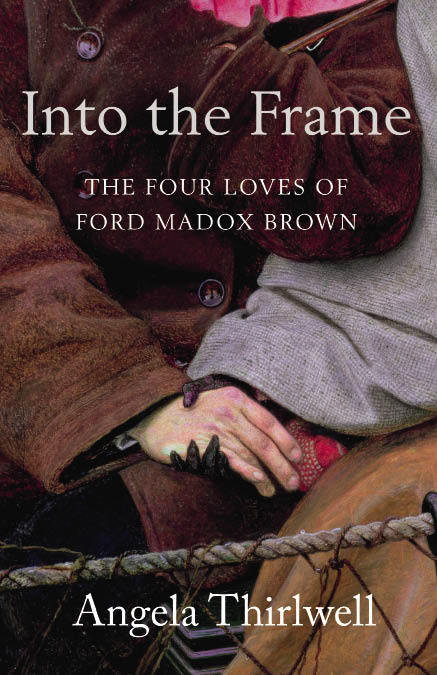Angela Thirlwell’s previous book was a double biography of William Rossetti (brother to the more famous Dante Gabriel) and his wife Lucy (daughter of the more famous Ford Madox Brown).
Angela Thirlwell’s previous book was a double biography of William Rossetti (brother to the more famous Dante Gabriel) and his wife Lucy (daughter of the more famous Ford Madox Brown). Now she has once again turned her attention to the margins of the Pre-Raphaelite group, with a joint portrait of the four women who influenced Ford Madox Brown: his two wives, Elisabeth and Emma, and two women for whom he had spiritual affinities, and (probably platonic) romantic yearnings.
Elisabeth was, in reality, the least influential, for her life was pathetically brief. In 1841 the 19-year-old student painter had spent his childhood in Europe, where his father, a retired naval purser, had moved to eke out a small pension. Elisabeth was on her way home from finishing school in Germany when they met, and Brown was instantly smitten by his sophisticated, beautiful first cousin; himself only 19, he was so youthful looking that, at the wedding ceremony the vicar asked him when the bridegroom would arrive. The couple had a happy few years, and a child, but tuberculosis took Elisabeth, aged only 28.
Brown returned to an England he barely knew, and soon began a relationship with the illiterate daughter of a labourer. This was not unusual in his circle. Lizzie Siddal was the daughter of an ironmonger, Janey Morris the daughter of an ostler, while the father of Rossetti’s long-term companion, Fanny Cornforth, was a blacksmith (although Thirlwell wrongly says that Cornforth was a prostitute). Brown taught Emma to read, arranged for her to attend school and ultimately married her, and they were to remain more or less happily married until her death in 1890.
Emma, however, took to drink (she may also have been an epileptic — a fact curiously unmentioned by Thirlwell), and home life was not always particularly congenial. So along came the two great unspoken loves of Brown’s life, Marie Spartali, the artist daughter of a Greek shipowner, and Mathilde Blind, a German-born poet, daughter of a revolutionary pastor arrested in the 1848 revolutions. Spartali attended Brown for painting lessons, and his unrequited adoration was severely tested when she became engaged, greatly to her parents’ distress, to an American journalist and hero of the Cretan rebellion of 1866-8. Brown was unwillingly made her confidant and promoter of her marriage to his rival. When Marie moved abroad with her new husband, her place as eternal, unreachable love object was taken by Mathilde Blind, who ended up living with the Browns for much of the time, to the disgust of Brown’s painter-daughter Lucy, outraged on behalf of the stepmother she nevertheless cordially disliked.
With all these egos and dramas battling it out on the page, Into the Frame cannot fail to engage the reader. There are, however, moments when one wishes that instead of focusing on the edges, Thirlwell would engage with the centre — with Brown — for without him, of course, nothing would have held these disparate women together.
Her choice, too, of writing thematically rather than chronologically means that it is not always easy to keep a grip on the material: one painting is even sold a dozen pages before it is painted, and we dash from decade to decade, frequently with only the dated endnotes to anchor us in time.
Thirlwell also permits her own feelings to take over. Marie Spartali’s husband was, on the evidence she presents, a thoroughly nasty piece of work, controlling and self-pitying. She is a scrupulous biographer, however, and acknowledges that there is no evidence that Marie disliked him. Yet she constantly assumes Marie’s unhappiness, frequently wondering aloud how she tolerated him. The simplest answer, that perhaps Marie liked him and approved his behaviour, appears not to have occurred to her.
Nevertheless, Thirlwell’s passion and her commitment to these women make her an engaging partisan for most of the time. The description of the swirling, febrile emotional temperature surrounding the ménage consisting of Brown and Emma, and their closest friends, Dante Gabriel Rossetti and Lizzie Siddal, as Rossetti endlessly promised marriage, then retreated, driving his fragile, increasingly drug-addicted fiancée ever closer to the edge, is drawn concisely and yet with great feeling.
So too is her notably efficient sketch of the ferment that was Europe in the 1840s, captured beautifully in the girlhood of Mathilde Blind (and the sly, efficient portrait of the snobbish, anti-Semitic Karl Marx is a treat.) When Thirlwell engages with Brown’s work, too, there are many pleasures; her history of his masterpiece, ‘The Last of England’, is a fine interweaving of biography and art history.
Ford Madox Brown was somewhat overlooked in his own day, his curious, out-of-step style and his abrasive personality warding off the popularity that other, sometimes lesser, artists garnered more easily. It is pleasant, therefore, to see him receiving his due in this interesting, sideways look at his work via the women in his life.






Comments